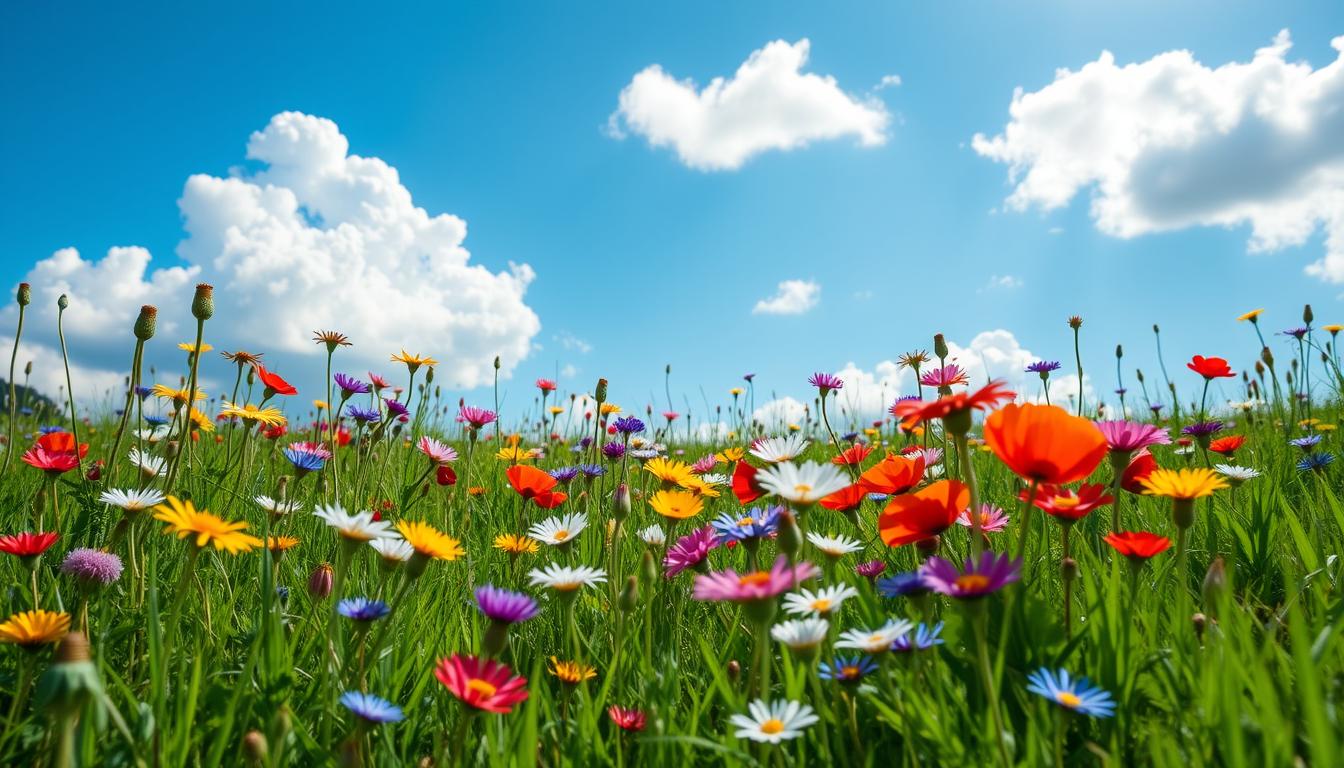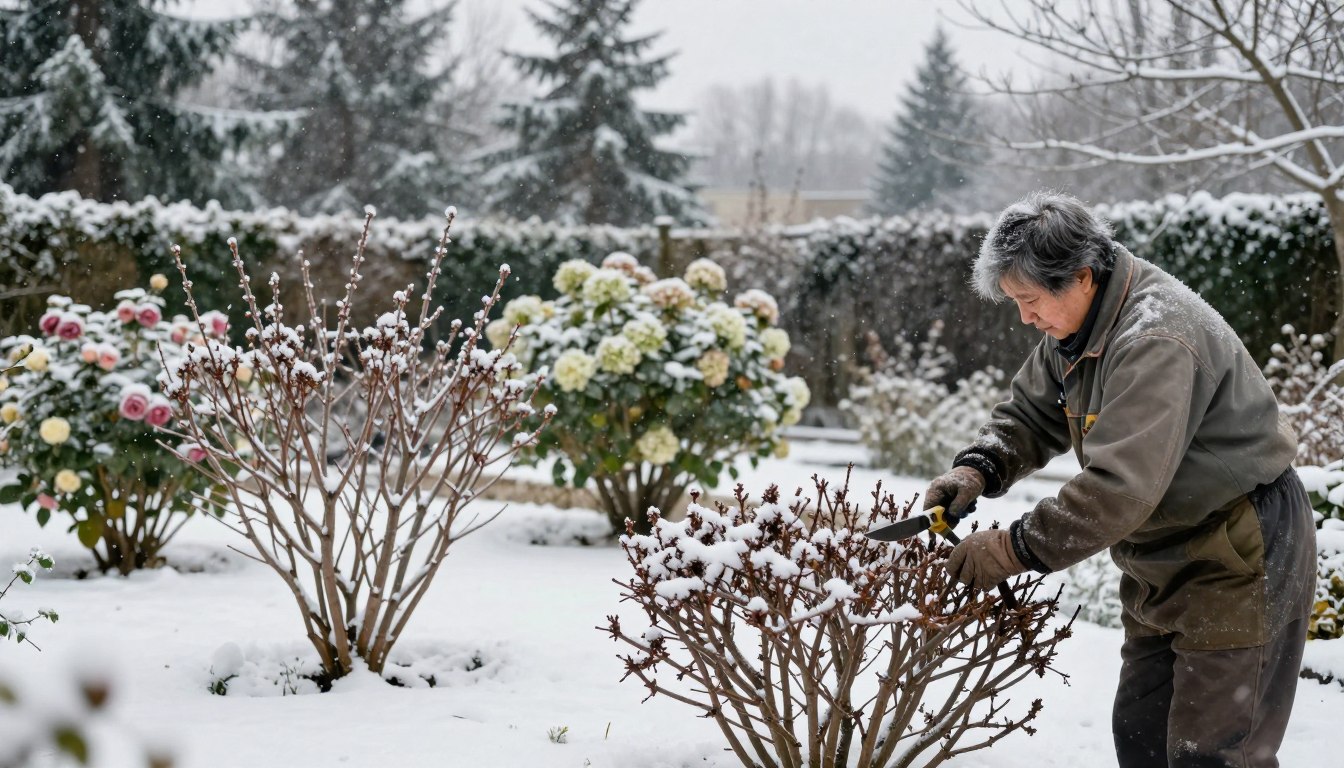Imagine turning a blank spot into a lively, natural haven full of native wildflowers and buzzing pollinators. This is what happens when you create your own wildflower meadow patch. By planting native wildflowers, you bring color and charm to your outdoor space. You also help support a wide range of insects that find it hard to survive in cities.
A wildflower meadow patch is easy to care for, unlike a regular lawn or flower garden. By picking the right wildflower seeds, you can make a pollinator garden that blooms year after year. Whether you have a small area or a big meadow, this project is a great way to adopt natural landscaping and sustainable gardening methods.
Key Takeaways
- Creating a wildflower meadow patch provides vital resources for pollinators and insects in urban areas.
- Planting native wildflowers is a low-maintenance, sustainable gardening approach.
- A wildflower meadow patch can be established on a small flowerbed or an entire meadow.
- Wildflower seeds can be used to create a vibrant, blooming pollinator garden.
- Embracing natural landscaping with a wildflower meadow patch supports biodiversity conservation.
What is a Wildflower Meadow Patch?
A wildflower meadow patch is a small area filled with native wildflowers and grasses. It’s a green, eco-friendly choice for your yard. It’s good for the environment and helps local wildlife.
Benefits of Native Wildflowers
Native wildflowers fit well in your local climate and soil. They need less water and care than other plants. A wildflower meadow patch attracts insects, butterflies, and birds, boosting biodiversity.
These plants also help the soil and prevent erosion. They make your garden look great and help the environment. This is a smart choice for eco-friendly gardening.
A landscape lush with native grasses and wildflowers will make an orchard and vegetable garden hum with life while also eliminating a lot of work for the gardener.
Choosing native wildflowers for your yard is a smart move. It makes your garden beautiful and helps the local ecosystem. It’s a win-win for you and nature.
Preparing the Site for Your Wildflower Meadow Patch
To create a stunning wildflower meadow, you need to prepare the site well. Start by controlling weeds and managing the soil.
Weed Control
First, tackle any weeds that are already there. You can do this by digging or rotovating the area. Make sure to bury any vegetation 15-20 cm deep. This action brings less fertile soil to the top, which is good for your wildflowers.
Soil Preparation
Don’t add manure or fertilizer to the soil. This can make the grasses grow too strong and block the wildflowers. Instead, firm and rake the surface to make a smooth seedbed. This is ready for sowing in the autumn.
This timing lets the seeds settle in over winter. They’ll get a head start in the growing season.
“The key to a successful wildflower meadow is thorough site preparation. By controlling weeds and managing the soil correctly, you set the stage for a vibrant and diverse display of native blooms.”
With the site ready and seeds sown, you’re on your way to a beautiful wildflower meadow. Next, pick the right wildflower seeds for your area and sow them at the best time.
Choosing and Sowing Wildflower Seeds
Creating your own wildflower meadow starts with picking the right wildflower seed mix and sowing it correctly. Local seed companies offer native wildflower seed mixes, which are ideal for a thriving meadow.
When picking a native seed selection, think about your area’s climate and soil. Choose a mix with native grasses and flowers that match your region. This will help your meadow look stunning and diverse.
To sow the wildflower seeds, mix them with sand for even distribution. Lightly rake or tamp the seeds into the soil, but don’t bury them too deep. Wildflower seeds need sunlight to grow.
For a successful meadow establishment, choose the right native seed mix and sow it correctly. This will lead to a beautiful, thriving meadow that attracts pollinators and beautifies your outdoor space.

| Seed Type | Germination Time | Bloom Period |
|---|---|---|
| Coneflower | 7-21 days | Summer-Fall |
| Blanket Flower | 10-20 days | Summer-Fall |
| Black-Eyed Susan | 7-21 days | Summer-Fall |
| Butterfly Milkweed | 14-30 days | Summer-Fall |
Maintaining Your Wildflower Meadow Patch
Starting a wildflower meadow is just the beginning. Keeping it healthy is key for its long-term success. This ensures your meadow stays vibrant year after year.
First Year Maintenance
In the first year, setting the right mowing regime is crucial. Cut the meadow to 5-7 cm when it reaches 10-20 cm. This might need 1-4 mows. It helps control weeds and lets wildflowers grow.
Watch out for weeds and pull them by hand. This early weed control helps your wildflowers take over the meadow.
Ongoing Maintenance
After the first year, you’ll need only 2 cuts a year. Mow once in late July or early August and again in early autumn. Leave the clippings for a couple of days to let seeds drop. Then, rake up and remove to keep the soil fertile.
When mowing, be careful not to harm small animals or birds. With careful long-term care, your meadow will thrive for years.
Wildflower Meadow Patch
Creating a wildflower meadow in your yard is a great way to make it vibrant and pollinator-friendly. Planting different native wildflowers and grasses makes your yard low-maintenance and drought-tolerant. It also supports many animals, like bees, butterflies, birds, and small mammals.
A wildflower meadow changes with the seasons, offering a wild look to your native garden. As flowers bloom and grasses move, you’ll see colors and movement. This attracts many pollinators, boosting your outdoor space’s biodiversity.
Keeping a wildflower meadow patch simple is easy. It needs little care compared to a lawn or ornamental garden. Letting plants grow and reseed naturally means you have a self-sustaining pollinator-friendly landscape. It’s interesting all year and a home for many animals.
“Creating a native wildflower meadow is one of the best ways to transform a yard into a vibrant, living ecosystem that supports pollinators and other wildlife.”
Whether your yard is big or small, a wildflower meadow patch is a beautiful addition. By using native wildflowers, you make a sustainable, biodiversity-enhancing landscape. It brings joy and wonder to your outdoor space.
Conclusion
Starting a wildflower meadow is a rewarding project. It can greatly help local biodiversity and the environment. By growing native plants, you create a space that needs little care and helps pollinators and wildlife.
The first steps, like preparing the ground and sowing seeds, take some work. But a wildflower meadow will keep growing and changing for years. It turns your yard into a stunning and valuable place for nature.
A wildflower meadow offers many benefits. It helps pollinator conservation and supports sustainable landscaping and ecological restoration. By creating a native garden, you help your local ecosystem. You also get to see a variety of beautiful flowers all year.
Even if you have a small yard, creating a wildflower meadow patch is a great idea. It’s a project that benefits the environment and your community. It’s a chance to make your outdoor space better and care for nature.
FAQ
Q: What are the benefits of creating a wildflower meadow patch?
A: A wildflower meadow patch helps many insects and pollinators in urban areas. It’s also better for the environment than a regular lawn. Wildflower meadows need less care and no gas-powered tools.
Q: Why should I choose native plants for my wildflower meadow?
A: Native plants use less water and have strong roots that help the soil. They offer food and homes for pollinators and wildlife. Plus, they need much less care than other plants.
Q: How do I prepare the site for a wildflower meadow patch?
A: Start by getting rid of weeds by digging or rotovating the soil. Make sure to bury any plants deeply. Don’t add manure or fertilizer to stop grass from growing too much.
Firm the soil and rake it to make a good seedbed. Then, sow the seeds in autumn. This lets them settle in over winter.
Q: What kind of wildflower seeds should I choose?
A: For a native meadow, pick a mix of grasses and flowers that fit your local climate and soil. Mix the seeds with sand for even application. Lightly rake or tamp them into the soil.
Don’t cover the seeds too deeply. Many wildflower seeds need sunlight to grow.
Q: How do I maintain my wildflower meadow patch?
A: In the first year, it’s key to get the mowing right. Cut the meadow to 5-7 cm when it’s 10-20 cm tall. This might need 1-4 mows.
Deal with any strong weeds by pulling them by hand. After the first year, you’ll only need 2 cuts a year. Do one in late July or early August and another in early autumn.
Always leave the clippings for a couple of days. Then, rake them up and remove them. This keeps the soil fertile down.






